











At the heart of our mission is you. We’re here to walk alongside individuals of all ages, families, and those under stress on their journey to wellness. Our commitment is to provide therapeutic solutions that feel personal, accepting, and affirming. With a strength-based and neurodiversity affirming approach, we offer specialized therapy and education programs tailored for each unique person across all cultures and races. Our goal is to help unravel the complexities of trauma and the human experience. By nurturing self-development, we aim to instill healthy life patterns that transcend generations and improve relationships, all while honoring and celebrating diversity in every form.
Associate Clinicians have masters degrees, are provisionally licensed, bring the latest research and creativity into their work, and supervised by a Senior Clinician. Out of pocket fees range from $80-$180.
Graduate Student Clinicians are finishing their masters degrees, bring the latest research and fresh ideas into their work, and are closely supervised by two Senior Clinicians Out of pocket fee is $50 to cover administrative fees
Senior Clinicians have masters degrees, are fully licensed, and accept some insurances; out of pocket fees range from $150-$210. There is a waitlist for Senior Clinicians.
Neurodivergent affirming care for children, adolescents, and adults
Parenting support and courses
Educator & Counselor consultation
IEP Support & Resources
Play Therapy
Sandtray Play Therapy
Family Therapy
Autplay Play Therapy
Trauma Therapy
Sensory Sensitivities
Cognitive Behavioral Therapy
Solution-Focused Therapy

Tumwater, WA
Montesano, WA
Lander, WY Bellevue WA
Telehealth

www.olympiatherapy.com
W
h a t t h e r e s e a r c h s a y s
An overview of child development by Playful Wisdom
E q u i l i b r i u m & D i s e q u i l i b r i u m
I t i s s o i m p o r t a n t f o r p a r e n t s t o k n o w w h a t t o e x p e c t w h e n i t c o m e s t o t h e
d i f f e r e n t a c h i e v e m e n t s a n d s t r u g g l e s o f a c h i l d ' s d e v e l o p m e n t F a c t s l i k e e v e n
v e r s u s o d d y e a r s b e i n g d r a m a t i c a l l y d i f f e r e n t b a s e d o n t h e b r a i n a n d b o d y
d e v e l o p m e n t a t e a c h a g e
E q u i l i b r i u m , w h i c h o c c u r s a r o u n d a g e s t w o , t h r e e , f o u r , a n d f i v e , t h e n e v e n - a g e
y e a r s , r e p r e s e n t s w h e n c h i l d r e n p r a c t i c e s k i l l s t h e y h a v e m a s t e r e d a n d a p p e a r
c o o r d i n a t e d a n d a t e a s e w i t h t h e m s e l v e s a n d t h e w o r l d E q u i l i b r i u m i s w h e n t h e y
a r e g e n e r a l l y c a l m a n d c o o p e r a t i v e a n d s e e m i n g l y c a p a b l e o f m a i n t a i n i n g s o m e
c o n t r o l o v e r t h e i r e m o t i o n s a n d b e h a v i o r
D i s e q u i l i b r i u m i s a p e r i o d o f f a s t g r o w t h , a n d a s s i m i l a t i o n s o o n f o l l o w s , w h e r e
c h i l d r e n l e a r n t o i n c o r p o r a t e n e w a b i l i t i e s o n t h e h a l f - b i r t h d a y s i n t h e f i r s t f i v e y e a r s - b e g i n n i n g a t e i g h t e e n m o n t h s . T h e s e p e r i o d s a r e a n x i o u s , a w k w a r d , a t
t i m e s r e g r e s s e d b e h a v i o r o c c u r s e v e r y o d d y e a r .
E v e r y 6 m o n t h s t i l l 5 i s a n e w l e v e l o f b r a i n f u n c t i o n i n g , t h e n e v e r y o d d y e a r t e n d s
t o b e m o r e d i f f i c u l t . R e m e m b e r e v e r y c h i l d i s d i f f e r e n t .
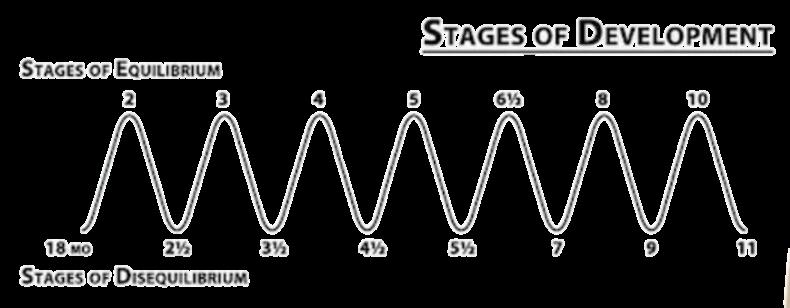
Wh e n t o S e e k H e l p
C a n n o t w a l k b y e i g h t e e n m o n t h s
F a i l s t o d e v e l o p a m a t u r e h e e l - t o e w a l k i n g p a t t e r n a f t e r s e v e r a l m o n t h s o f w a l k i n g , o r w a l k s
e x c l u s i v e l y o n h i s t o e s
D o e s n o t s p e a k a t l e a s t f i f t e e n w o r d s b y e i g h t e e n m o n t h s
D o e s n o t u s e t w o - w o r d s e n t e n c e s b y a g e t w o
D o e s n o t s e e m t o k n o w t h e f u n c t i o n o f c o m m o n h o u s e h o l d o b j e c t s ( b r u s h , t e l e p h o n e , b e l l , f o r k , s p o o n ) b y f i f t e e n m o n t h s
D o e s n o t i m i t a t e a c t i o n s o r w o r d s b y t h e e n d o f t h i s p e r i o d
D o e s n o t f o l l o w s i m p l e i n s t r u c t i o n s b y a g e t w o
C a n n o t p u s h a w h e e l e d t o y b y a g e t w o
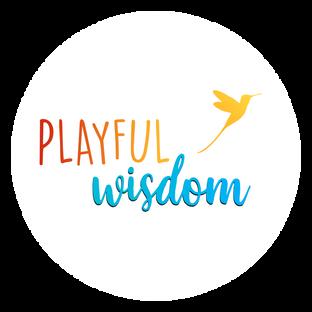
G r a p h i c a d a p t e d f r o m

Language, Thinking, Problem-solving, & Decisions Making using the Higher-level brain functions: Logic & Reasoning, Reflection, Perspective, Memory Recall is possible Can Take Action & Be Responsive to Events
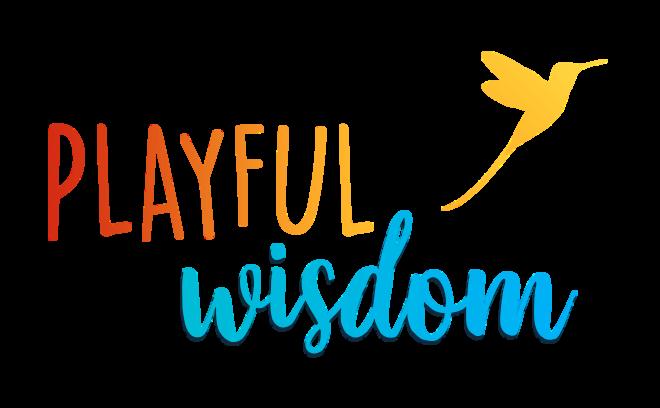
Relational, Connection, One-to-One, Body is Regulated. Relationship is possible Language is coming back Focus on Feeling Connected Has limited control of self & behaviors
The External world, Functional 4 Senses (outside of the body)feel Secure & Safe NonVerbal. Calm the Flight/Fight/Freeze/Fawn Response. No Control of Behavior
Regulation of Foundational 4 Senses
Internal world is Safe & Connected
Non-verbal
No Control of Behaviors

The brain develops from the Bottom to Top, Inside to Outside Back to Front, Right to Left



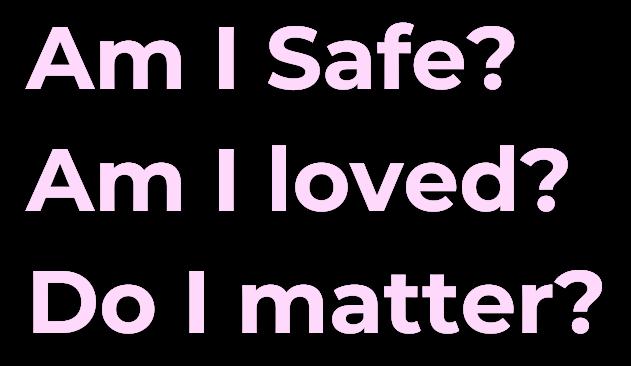




1. External stimuli (visual/sight, auditory/sound, olfactory/smell, tactile/touch, and gustatory/taste) enter the body through sensory receptors.
2.Internal stimuli (proprioceptive/movement and position in space, vestibular/balance, interoceptive/awareness of internal organ needs) activate the peripheral nerves.

3. External and internal sensory input travels to the brain and is processed as either over-arousal, under-arousal, or neutral information.
4. Input that our brains process as overarousal, register in our bodies as a hypersensitivity. Hypersensitivity can present as fear, avoidance, distraction, or poor balance.
5. Input that our brains process as underarousal, register in our bodies as hyposensitivity. Hyposensitivity can present as overly touchy, close proximity to others, an inability to sit still, thrill-seeking, or clumsiness.
6. Input processed as neutral information do not present in our bodies as problematic behaviors. SPD arises when the hyper- or hypo- sensitivity to sensory input causes dysfunction in the person's daily life. Every person with SPD can experience a different combination of sensory challenges. www.OlympiaTherapy.com

HyperArousal
Emotional Reactivity
Increased Sensitivity
Hyper-Vigilance
High Anxiety
Over-Functioning
Disorganized Thinking

Here
Can regulate Emotions & Body
Information can Integrate
Felt-sense of Safety & Security
Thinking/Problem solving occurs
A calm person can help regulate another person
HypoArousal
Low Energy
Under Functioning
Emotions are Numb/Absent
Cognition/Thinking is Offline
Too long in Hyper Arousal results in dropping to here

"BE WITH" THEM IN THE FEELING
It takes COURAGE to LISTEN, to IDENTIFY what is really being expressed to you.
To TRUST that "being with" them in the struggle is the Empathy & Validation needed for true Connection & Relationship growth & change.
EMPATHY takes COMPASSION, COUAGE, & willingness to CONNECT during the difficult times.
1. Stomach Aches/Headaches
2. Crying and difficulty managing emotions
3. Overly picky about foods, only wanting to repeat the menu everyday.
4. Sleep Challenges: Difficulty falling/staying asleep.
5. Avoiding activities or events they once enjoyed
6. Physically lashing out, hitting, striking, & throwing things
7. Negativity- “Everything is wrong”
8. Feeling overly worried. Repeating of statements
9. Anger. The perception of danger, stress or opposition triggers fight or flight, leaving your child angry and without a way to communicate.
10. Defiance. Not able to communicate what is really going on, not a lack of discipline but a situation where they are out of control, feeling helpless and having challenging behavior.
11. Over-planning: trying to control situations/events to every last detail.
12. Refusing to listen to simple instructions
13. Chandeliering: suddenly flying off the handle for no reason.
14. Lack of Focus: So caught up in their own thoughts that they can’t pay attention to what is going on around them.
15. Regression- Acting younger or regressing in behaviors. Such as potty training, separation anxiety, and childhood soothers.

1. Depressed Mood- They just seem “down,” for no apparent reason
2. Loss of interest/caring. Not interested in normal activity. Do they not care about things they used to enjoy?
3. Feelings of guilt or worthlessness. You might hear “I can’t do anything right.” Feel helpless, like there is no way to make things improve.
4. Hopelessness/Discouraged. A lack of interest in trying, “What does it matter?” or “Who cares?” No plans for the future.
5 Difficulty concentrating Has trouble working on homework, listening to a conversation, or paying attention to anything for too long
6. Agitated, irritable, over-reacting to the smallest events or comments.
7. Sad. If you took their picture throughout the day, would they smile?
8. Lack of Emotion. They might not express their feelings at all, a kind of emotional deadness.
9. Suicidal thoughts. You might hear them comment with empathy about a suicide in a movie, perhaps with a comment like, “Yeah, that’s a way out ”
10. Disconnected. Are they disconnecting from the family, friends, and other people?
11. Decreased energy. Like everything they do takes more of an effort.
12. Sleep Challenges: Trouble falling/staying asleep, or sleeping all day.
13. Change in appetite, are they eating more or less than usual?
14 Screen-seeking Loss of interest in anything that requires focus/work (art, writing, reading) and seeking more screen time Hard time to get them off of screens

O v e r - R e s p o n s i v e
U n d e r - r e s p o n s i v e w w w . o l y m p i a t h e r a p y . c o m

O v e r - R e s p o n s i v e U n d e r - r e s p o n s i v e w w w . o l y m p i a t h e r a p y . c o m


When children are sensitive to external stimuli they may behave in ways that show that they are using all their energy to process or avoid input completely. They may not be able to participate in other activities or engage as they would otherwise. There are also internal senses (proprioception, vestibular, and interoception) that a child may be responding to. If you think your child may have Sensory Processing Disorder please talk to a medical provider.
-Increasingly distracted & disoriented
-Tremors/Shaking
-Rapid breathing
-Covering ears
-Shutting down
-Refusal to participate
-"Sudden" anger
-Laying on the ground
-Uncontrollable screaming & crying
-Covering ears
-Shutting down
-Refusal to participate
-Fidgeting & Restless
-Cannot complete tasks
-Doesn't want to be touched
-Sleeplessness
-Laying upside down
-Hiding
-Covering eyes
-Drooling -Wetting accidents
-Running away
-Repeated statements
-Loss of words instead uses grunts, squeals


a p p r o p r i a t e w a y
L
T i r e d ? H e l p y o u r c h i l d s l o w d o w n .
R
s
When your child misbehaves there is often a reason behind their misbehavior. Try to identify what is going on and address that before addressing their behavior. This will make your child feel heard and ultimately help them be more receptive to a discussion about what happened.

hunger, thirst, lack of sleep, illness, disorder, or infection, nutrient deficiency, lack of exercise
sensory overload, sensory processing challenges, sensory needs, sensory triggers & inputs
trauma, stress, anxiety, feeling unsafe or uncertain, change in routine, excitement, anger, other emotions, or connection needs

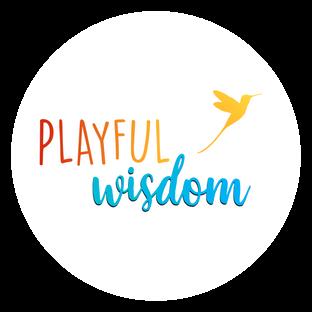
When a child is dysregulated they feel out of control of their body and their emotions. They may have tantrums, cry easily, act out angrily or in ways they otherwise would not. Only when regulated can they make sound, safe decisions and act rationally
"Wow that was a lot, I'm going to take a few big breaths!"
"We both have a lot of feelings. Let's take a moment to breathe them out."
"My tummy hurts" "I have a headache, it hurts to think."
"My tears are wet on my cheeks."
"My arms can squeeze you so tight."
"WHEN LITTLE PEOPLE ARE OVERWHELMED BY BIG EMOTIONS IT'S OUR JOB TO SHARE OUR CALM NOT JOIN IN THEIR CHAOS." L . R . K N O S T
Remember that it is your job as your child's parent to teach them how to identify and handle their own emotions. Avoid saying things like, "calm down," or "stop crying," as these statements tell our children that their emotions are not okay. Helping your child regulate will eventually help them learn how to regulate themselves.

Your brain and body process sensations all the time, every day. From the moment your life began, your nervous system has been registering and coding every sensory event inside and outside your body millions of inputs per second. Every time your brain and body register a sensation, they must put it in order of importance and interpret its properties. In other terms, your brain and body must figure out- is this hot or cold, big or small, dangerous or safe, etc. When our responses are mostly proportionate, adaptive, and functional, we experience sensory health.
A VARIETY OF DIFFERENT SENSORY DATA IS COMING AT US, ALL AT ONCE, ALL THE TIME FROM OUR SENSORY SYSTEMS.
Integrating these different streams of sensory data is how we learn about ourselves, others, and our environment. It's how we construct our reality.

Sensory health is more than the absence of disorder. It is the highest attainable state of neurosensory well-being.
From one person to the next, there is a tremendous difference in how our brain-and-body take in and process sensations daily. This means that everyone's experience of the world is different. We also have different sensory preferences - what is cold to you might be shorts weather for someone else. What is spicy to you is usually pretty bland to someone else; even loudness can be a matter of opinion. Some people's sensory differences mean that their experience of the world is SO DIFFERENT that we cannot even imagine what it feels like to be in their body and how their body feels in the world.
Sometimes a person's sensory integration and processing differences are so profound that it is experienced as a physical disability. This brain-body disconnect can present itself in a lot of different ways. For some people, their bodies move when they do not want or expect it to, while other people's bodies may not respond to what their brain wants them to do. There can also be a mixture of these two phenomena that can make things even more complicated. This brain-body disconnect can include movement, noise-making, and even speech.
When sensory differences interfere with the ability to function and participate, we might describe that as disordered sensory processing (which does not mean the person is disordered). For some people it really does feel like sensations are out of order, blocked, chaotic, and/or disorganizing.
EVERYONE has differences; it is the intensity at which the input from the brain-body connection impacts you that determines your level of sensory health.
Tantrums are goal oriented, the person will make a scene to get what they want.
Intensity or nature of the tantrum may change depending on how who is "in charge' reacts.

Individual avoids injury
Once the goal is achieved or the person gets tired, the tantrum ends.
During a tantrum the individual is in control of their actions the entire time.
Tantrums usually begins when they are faced with the inability to achieve their desired outcome.
No demands are made before or after the melt-down
The person melting down has no interest in how others react
Because they are reacting in a primal way to being overloaded, the person melting down may be injured
Meltdowns last longer and slow down once a person acclimates their surroundings
Due to massive overstimulation there is no control. They are in survival mode, acting instinctively from distress.
Spacing out could be linked to medical issues. Look for symptoms of becoming overwhelmed by sensory stimulation.

If you have enough information to ask a question, you have enough to make a statement.
Acknowledgment of: actions, feelings, wants, wishes, needs, & intentions.
I wonder...
I see....
I understand...
You have a plan.... You’re going to...
You chose...
You were able to...
You did...
You sound...
You've decided
Tell me...
Your non-verbals (body language, tone, facial expressions) need to match your statement.
Non-committals of: Oh, Hmm, Huh, Ahh, can be used to express understanding